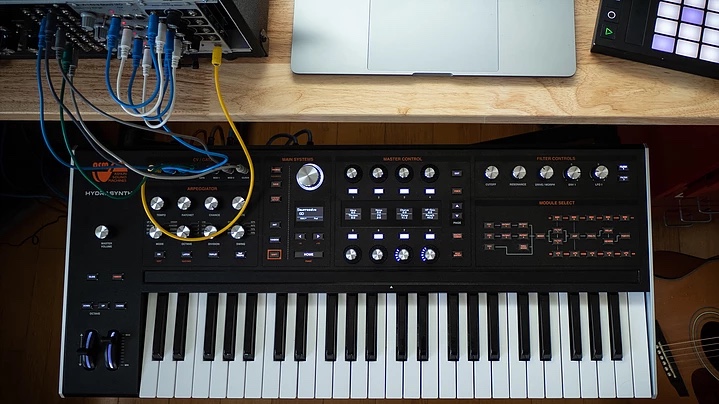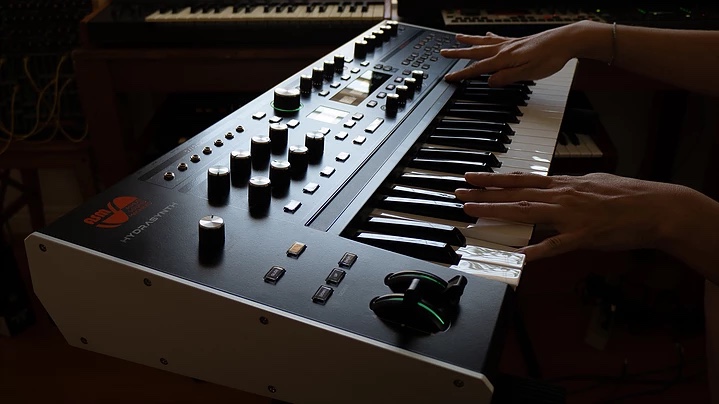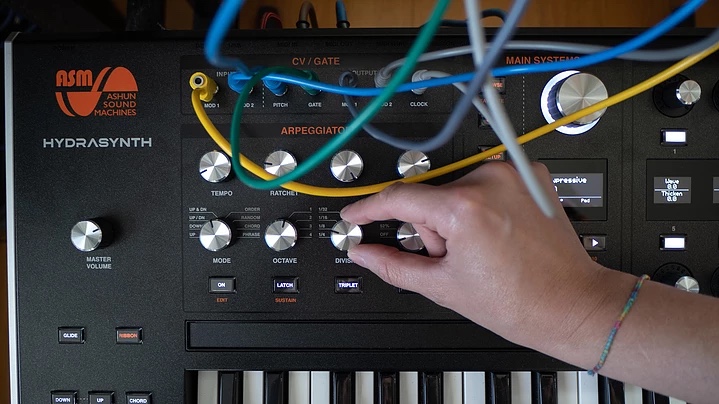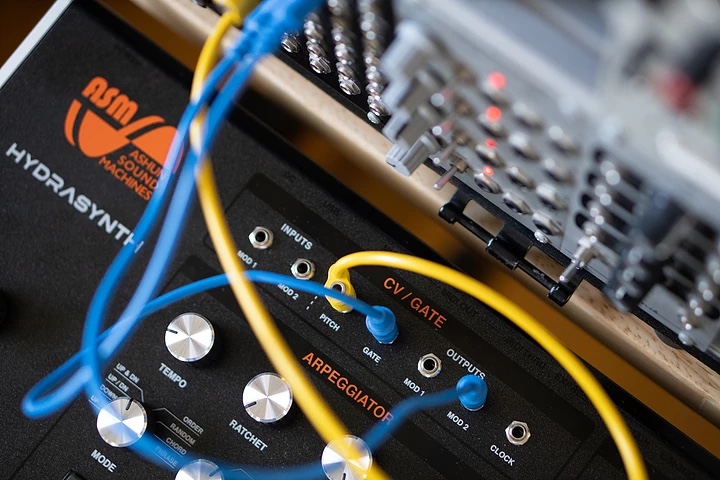It calls itself a “dream synth” for sound designers and performers alike. It’s got polyphonic aftertouch. And it signals a return of the designer of the Arturia ‘Brutes and Akai APC40.

Today is the first time I think most of us have heard of Ashun Sound Machines. Evidently, it’s a new synthesizer brand backed by Hong Kong-based Medeli Electronics Co. If you were watching Glen Darcey’s LinkedIn, you might have noticed that Medeli was where he left after departing an epic run at Arturia.
Who’s Glen? Well, you might or might not know him from CDM and YouTube, but you definitely know the products he worked on. At Akai, he led design of the MPC5000 and software/hardware MPCs, the APC40 (in collaboration with Ableton), the MPK keyboards (a couple of which get used way more than I might ever have expected around my studio here), and the somewhat unsung MAX49, which got a patent and heralded the CV control of products to come.
At Arturia, there were iPad apps, V-Collection instruments, and crucially the ‘Brute line of synths (through the MicroFreak) and BeatStep Pro.
Product design is always a team effort. But Glen did lead the way in tapping into some key trends – in particular, how digital controllers (like the BeatStep Pro) might thrive in a reinvigorated age of analog. The module I mentioned yesterday, the MOK WAVERAZOR, has MIDI minijacks on it for a reason – it can easily connect to the BeatStep Pro, which has become oddly ubiquitous as an inexpensive add-on to so many Eurorack rigs.


The Hydrasynth is more in line with the MatrixBrute – it’s a no holds-barred keyboard synth chock full of wish fulfillment. Think deep sound creation engine meets extensive live performance controls.
And while a few other recent polysynths have nodded in this direction, it’s also something else – a futuristic keyboard, in a landscape that at the moment remains dominated by retro features.
On the performance side:
There’s a four-octave ribbon controller. (Shades of Kurzweil, even?) There’s the polyphonic aftertouch I know many of you have been clamouring for on forums. There are pitch and mod wheels – but ones that seem designed by people who like wheels. There are a ton of fabulous knobs. And there are little colored pads… because I guess we need them.
(By the way, if you just want the sound side and not the keyboard, there’s also a desktop version.)
On the sound side…
…you get 3 oscillators with “advanced wavetable synthesis.” (That’s way better than “primitive wavetable synthesis.” Oh, wait… actually, I like that, too; I sort of run a business on it. But yes, advanced.)
219 single cycle waveforms can be morphed from one into the next, or stacked (via what they call Wavestack – a kind of swarming engine), with some intriguing takes on pulse width and slicing and harmonic sweeping, in addition to the usual hard sync and so on. If that sounds familiar, yes, the module I wrote up yesterday has some parallel ideas. Clearly, the epoch of wavetable and polysynth is upon us.
You also get elaborate filter and mixing options, with two filters that sweep SEM-style between modes.
And then of course there’s tons of arpeggiation and modulation and mod matrix and envelope control and the rest. In some unique twists, you also get 5 low frequency oscillators and mini step sequencers, so you can create some sophisticated rhythmic morphing sounds.

It all seems very cool. If there were still a print Keyboard Magazine, I would love to read (write?) a cover story of this, with Herbie Hancock at the keys, smiling. Ah, those days.
SonicState were also given a look at this:
And Loopop are out with a review:
Check the product site, which inexplicably tells us “digital is the new analog.” I … guess they’re being ironic?